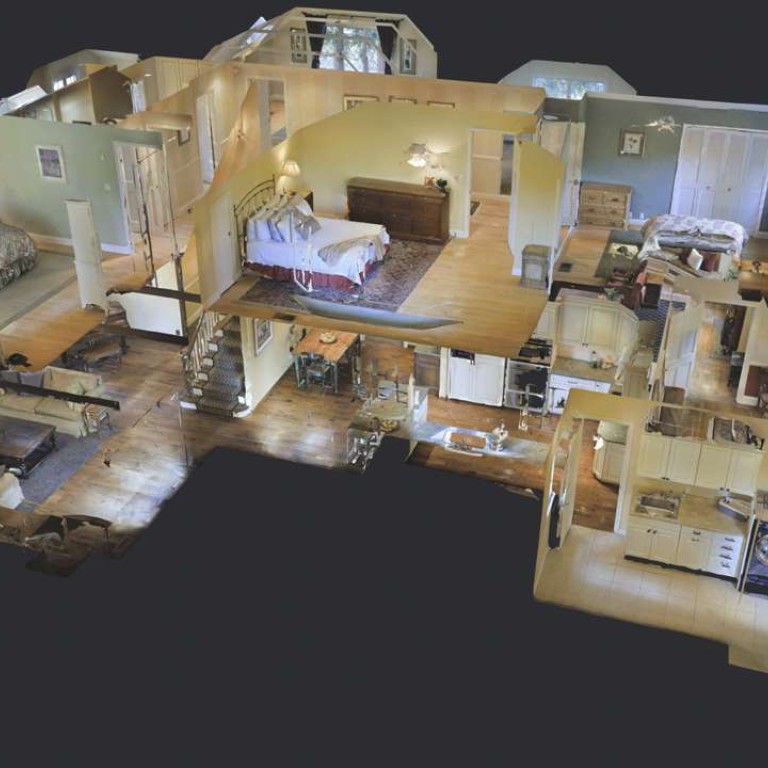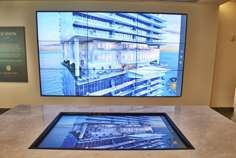
Virtual reality opens new doors for property dealers
Scouting for a new home is no longer a lengthy or cumbersome process, all it involves is little more than a headset
Looking for a new home used to involve driving around to look at dozens of prospects, the majority of which were eliminated minutes after walking through the front door.
These days, however, scouting for a new home involves little more than a headset. “We wanted to give people the ability to assess a property without having to physically go there,” said Bill Brown, CEO of Matterport, which creates 3D models of properties.
Such tools are increasingly being adopted in the global real estate market. Matterport, for example, was recently used for a Los Angeles-area home designed by Richard Landry: click on the link from any computer or mobile device and you are right in the space, walking through rooms, going outside to enjoy the views, or zooming in to see the position of an electrical outlet on a wall.
Some agents use it as a way to sell high-end homes to time-strapped billionaires. “I have a US$85 million [Los Angeles] home that I’m doing as a virtual-reality listing because I assume my buyer will be international,” said Los Angeles-based real estate agent Aaron Kirman.
His approach is a bespoke one: a specialist took two days to film the estate and its grounds, which was then uploaded to a specific virtual-reality platform. Upon request, Kirman sends an Oculus Rift or similar headset to his list of high-end buyers, a third of whom are in Southeast Asia.

At its most cutting edge, virtual reality is being used when there isn’t even a building ready to walk through. For the Park Lane Ala Moana in Honolulu, scheduled for completion in 2017, director of sales Matt Pakkala visits potential buyers to show them the property using virtual technology.
“We’ve gotten away from the traditional idea of building a scale model in a sales office,” said Pakkala. “Now, our clients can sit in their own living room and be inside a virtual model instead.”
More than 80 per cent of the Park Lane Ala Moana properties – priced up to US$28 million – have been sold, and the majority of buyers didn’t need to set foot on the construction site. “Where virtual technology has helped us is that it gives people an understanding of not just the shape and size of the residence, but really getting someone inside it. It’s hard to get that from a floor plan or scale model,” said Pakkala.
Jade Signature, a luxury tower under construction in Sunny Isles Beach, Florida, has drawn international interest because of the hi-tech imagery of the finished unit. A Samsung mobile phone and headset allow viewers to focus on different parts of the “space” without even having to click on anything.
The technology needs to be easily accessible, says Gonzalo Navarro, principal at ArX Solutions, a company with offices in Miami, New York and Madrid that has developed “full immersive technologies” for the upcoming Turnberry Ocean Club in Miami. Using an Oclus Rift, Sony PS4, Mobile VR or Steam VR headset, or mobile devices, prospective buyers “can go everywhere, like you’re in a video game”, says Navarro.

Some of the new residences at the Mandarin Oriental in Atlanta have been sold sight-unseen to buyers who have made their decisions based on Matterport 3D virtual tours. “The viewer can … open and walk into closets, view the home at different times of the day, or zoom out for a dollhouse view,” said Karen Rodriguez, founder and CEO of KORA Real Estate Group, which is handling the sales for the property.
The tool is also being adopted by possible buyers once they’ve already seen the home. “After a few weeks have passed, they can’t remember exactly what a plan looked like, or how they felt about a certain room,” said Rodriguez. “But in a matter of minutes they can pull up the walkthrough and feel like they are back in the actual home.”
Buyers, however, need to be more aware than ever. “Everyone says that virtual realty and high-end real estate is the next big thing,” said Tyson Woeste, founder of Transported VR, a virtual reality platform. “But what you’re selling isn’t precision … There’s not always a super accurate and realistic understanding of the building.”
He says the most ideal way to use virtual technology is to think of it as a way to eliminate potential properties. Transported’s software is made for the buyer’s real estate agent, who would need a VR headset set up in their office. “You can go through 20 homes in an hour in your agent’s office. It gives you an emotional, visceral sense of space and place,” he said.
Still, said Woeste, even the most accurate and advanced of technologies can’t take the place of relying on an agent who knows a client’s tastes. “It can help them be more efficient,” he said. “But it does not replace them, and I don’t think it ever will.”

